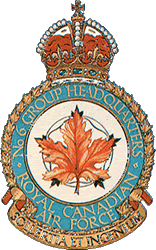
28 Lancasters from 408, 426, and 432 Squadrons were ordered on an attack at Berlin. The crews were over the target at between 19,000 and 23,000 feet, releasing 132,000 lbs of high explosives and 44,000 lbs of incendiaries. According to reports, the target was cloud covered and bombing was scattered.
![]()
F/O J. White from 408 Squadron returned early due to severe icing.
F/O W. Stewart returned early as the pilot was sick.
F/Lt R. Burns returned early as one engine was u/s and severe icing.
They landed safely at base on 3 engines.
P/O W. Phillips and crew, flying Lancaster II DS-729 coded EQ-D, were
attacked by a JU-88. The rear turret, port outer nacelle and bomb doors
were severely damaged. There were many strikes seen on the JU-88.
F/O F. Brice landed at Catfoss on return.
F/Sgt D. Hilker RCAF![]() and crew, flying Lancaster II LL-631 coded EQ-G, failed to return from
this operation.
and crew, flying Lancaster II LL-631 coded EQ-G, failed to return from
this operation.
- Sgt H. Hawkins RAF–POW
F/O E. Deakin RCAF–POW
P/O G. Morlock RCAF–POW
W/O2 L. Torpe RCAF–POW
Sgt H. Mouland RCAF
Sgt S. Sweetzir RCAF–POW
![]()
1st/Lt J. Smith from 426 Squadron returned early as one engine was u/s.
They landed safely at base on 3 engines.
F/Sgt R. Jarman and crew, flying Lancaster II LL-634 coded OW-F, were
attacked three times by an FW-190 and once by a JU-88, there was no claim
or damage.
P/O C. Griffiths RCAF![]() and crew, flying Lancaster II DS-760 coded OW-M, failed to return from
this operation.
and crew, flying Lancaster II DS-760 coded OW-M, failed to return from
this operation.
- F/Sgt L. Offer RCAF
Sgt G. Jowett RAF
F/Sgt P. Allwell RAF
P/O G. Sparks RCAF–POW
P/O R. Filbey RAF
Sgt R. Cridland RCAF–POW
P/O F. Symons RCAF
![]()
P/O T. Spink and crew from 432 Squadron, flying Lancaster II DS-788 coded QO-E, were attacked by an FW-200 before the target. There were bullet holes throughout the fuselage, the oxygen system was damaged and the crew had to bomb manually. They landed safely at Colby grange on return.
P/O J. McIntosh RCAF and crew, flying Lancaster II DS-792 coded QO-U, was attacked by an ME-110 and severely damaged. The Lancaster went into a dive from 23,000 feet. P/O McIntosh had to put his feet on the dash and use the trim wheel to pull out at 10,000 feet. The Me-110 was shot down in the combat. The crew was able to safely get back to England and land at Woodbridge. On inspection after landing, it was found that both stbd nacelle were blown off, hydraulics were u/s, there were 2 large tears in the stbd wing, the dinghy was hanging out, the tail, elevators, rear turret, mid upper turret, and fuselage were severely holed. Every propellor blade had at least one bullet hole in it and one blade was split to the hub and the stbd tire was blown off. P/O McIntosh was awarded a DFC for being able to get this badly damaged aircraft and crew back home.
F/Lt J. Allen RCAF![]() and crew, flying Lancaster II DS-739 coded QO-Y, failed to return from
this operation.
and crew, flying Lancaster II DS-739 coded QO-Y, failed to return from
this operation.
- Sgt W. Collier RAF
F/O F. Doull RCAF
F/O K. Crawford RCAF
W/O2 J. Scott RCAF
Sgt J. Cobbett RCAF
Sgt I. Dupuis RCAF
![]()
While the Lancasters went to Berlin, 433 squadron operating for the first time with Halifax IIIs were ordered on a mining operation to the Frisian Islands. 4 crews were over the garden at between 1,500 and 2,000 feet, sowing 12@1500 lb mines.
F/Sgt J. Wilson returned early as the navigation aids were u/s.
This was also the first operation by 6 Group flying the radial engined
Halifax III.
![]()